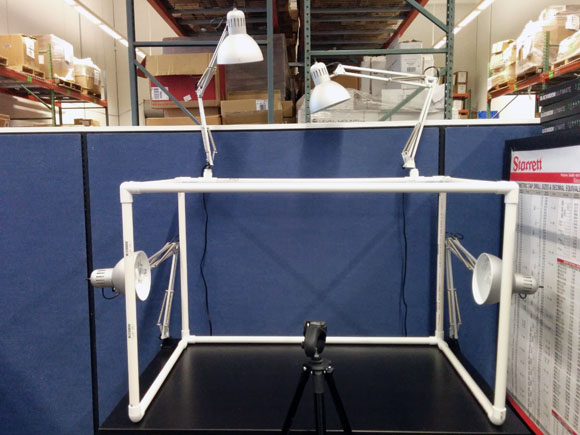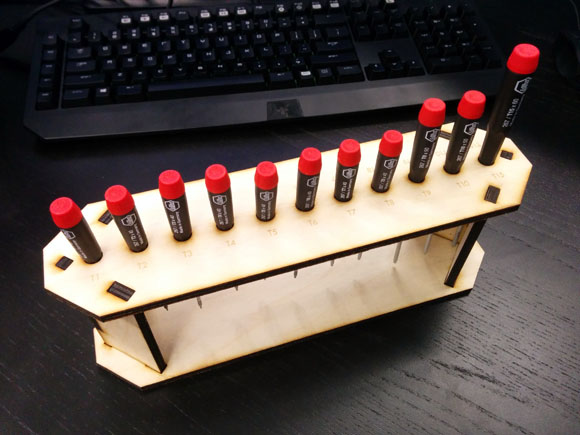Macro Photography Light Tent, Mk.2
I've upgraded my light tent for macro photography yet again. I reused most of the PVC components from the Mk.1 design but replaced some of the pipes to make the tent wider; I had sometimes been limited that way with the original design. I'm keeping this one at the office instead of at home and wanted to be able to accommodate one of the 23-inch wide patch panels I've designed, which requires a significantly wider light tent.

Upgraded frame on IKEA table
I designed the Mk.2 around some left-over IKEA GALANT parts we had in the office, which yielded a table 47.5 inches wide and 31.5 inches deep. I bought some M10-threaded caster wheels and screwed them into the bottom of the GALANT legs to make the table mobile for ease of re-configuring my office area.
